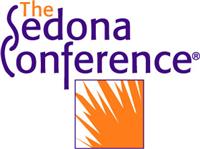 Many organizations continue to struggle with how to effectively manage the continuing tsunami of email, while ensuring compliance with company policies, industry regulations and state/federal laws.
Many organizations continue to struggle with how to effectively manage the continuing tsunami of email, while ensuring compliance with company policies, industry regulations and state/federal laws.
By answering the following questions, first asked at the Sedona Conference, you’ll be able to evaluate where your organization stands with email management:
- What are the current policies, processes, work practices, or procedures applicable to the creation, distribution, retention, retrieval, and deletion of email and other electronic communications in your firm?
- What contextual information does the email system generate? Don’t forget to include the attachments to those emails.
- What types of personal or distributed electronic devices are commonly used for handling email?
- What types of content are transmitted or received by email or contained within the message bodies?
- What user management practices are encouraged or tolerated for individual email accounts?
- What access to personal email archives exist on desktop and laptop hard drives and how often they are used?
- What is the role of the user in determining how long email is retained?
- When and how are existing email policies and procedures communicated to users?
- Who (and how many different functions) within the organization is responsible for or has email policies in place?
- How does the organization define a “record” and to what extent (percentage) are emails, usually based on content, included within this definition?
- How are emails with business significance, as defined by records schedules, treated?
- What are the current audit practices and capabilities to assure system integrity?
- Are users required to ascertain and classify email and to what extent is this accomplished?
- How is email integration into records management systems accomplished?
- How are litigation holds applied to email?
The Easy Answer
We believe the right answer to all 15 questions is to utilize email management software like Email Manager from CMA to build a bridge between Outlook and your document management system. In this way, the management, access, version control, retention scheduling, and other benefits of document management offers over electronic documents can be extended to email.
What email management practices do you have in your firm to ensure the timely and efficient integration, tracking and archiving of email and the attachments?

